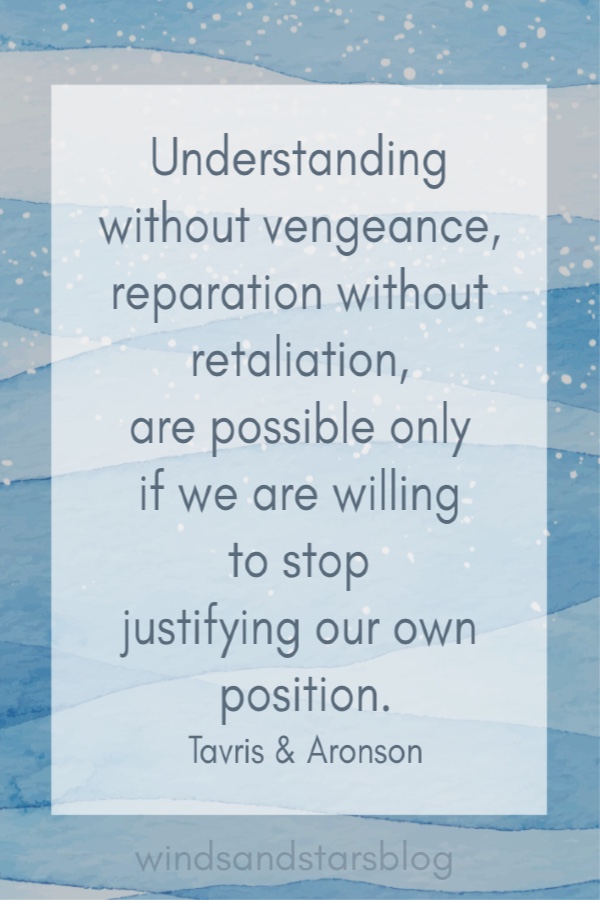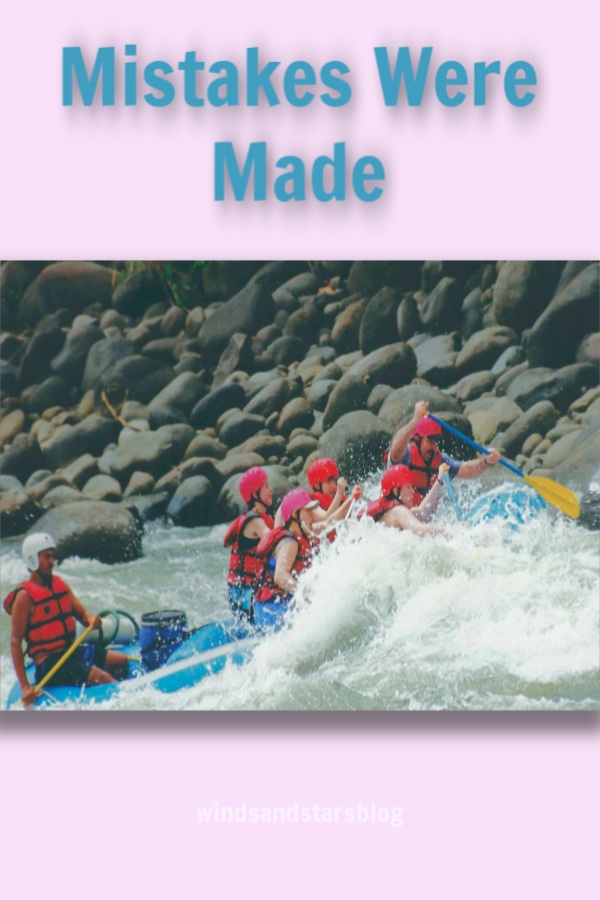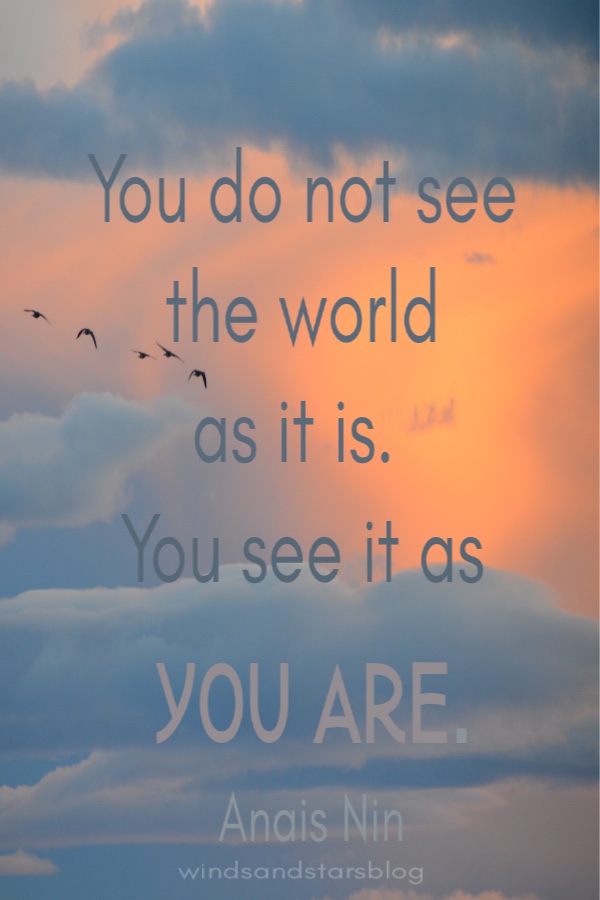Please Sir, don’t steer the raft!
Mistakes are never easy to accept. Some years ago, we took our three girls to Costa Rica. Curious whether our retelling of the rafting story had changed, I read the diary that we took turns writing in each day. Aside from some minor details, the story retained its accuracy.
Priscilla’s Entry
We met our guide, Mariano, at the river. He projected a confidence gained from years of guiding and rafting this river without mishap.
He, together with the guide from a second group of rafters, gave us a short lesson on rafting rules, expectations, commands, and what to do if we capsized. Which we wouldn’t. Would we?
Watching the other party of rafters pull away from shore, we positioned ourselves on the edge of the raft and set off behind them.
We grinned at each other as we bobbed over the first set of rapids.
But when we rounded the corner, my breath caught in my chest. In front of us was a boiling mess of water.
As the river got choppier, our guide yelled to my husband, “Please sir, do not steer the raft.”
Seconds later, he said to me, “Please, someone control him. Everybody must paddle together”.
I can only imagine what I said to my husband. I didn’t record it in our diary.
Soon after the onset of the rapids, we hit a huge trough. I slipped off the edge of the raft into the middle, tried to scramble up as Mariano yelled “Everyone inside …” Too late.
My family flew like ragdolls into the churning rapids.
I was pulled into a somersault under water. Finally surfacing, I saw Kelsey and Kim ahead of me. Yelling at them to get their feet up like we’d been told, I watched them helplessly as we rode the angry waves.
I had no idea where Budd or Melissa were. All of a sudden the water calmed. We were through the rapids and someone was pulling at me. I wanted to say no, get my kids, but realized that they were already being hauled into the raft.
Then someone yelled, “Get the other one. There’s still one more”.
I looked around panicked for a moment until I saw Melissa floating on her back placid as an otter. Quickly they maneuvered the raft to intercept her and pulled her in.
As much as I longed for the safety of our launch site, heading back upriver wasn’t an option. So with reluctance, we transferred back into our own raft just in time to greet the next set of rapids.
When wrong feels right
Budd’s entry.
Rafting is not canoeing but instincts for paddling my canoe took over. Especially as we reached the first serious rapids with at least 4-5 feet of standing waves.
I had my paddle dragging in the water attempting to steer which caused the raft to hit the wall of water sideways and in a split second the raft swamped and flipped . . . .
After being chastised by our guide, we continued down the river. My impulses to draw hard and steer took awhile to overcome, but by the end of the trip we were paddling like seasoned rafters.
My oldest daughter’s entry.
For the rest of the ride we steadily improved and some of us (hmmm…I wonder who?) learned that in order for us to remain afloat they needed to listen to the guide.
Default responses are hard to recognize and even harder to overcome.
Our mental models operate in the background informing our thoughts and behaviours. The more unaware we are of them, the more vulnerable we are to making mistakes and bad decisions.
Mistakes Were Made (but not by me)
Authors Tavris and Aronson use the pyramid as a metaphor to describe what occurs in the decision making process.
While the first decision we make may be closely related to it’s alternative, the gap widens as we seek to justify our decision.
“Once the door closes, so does the mind”
Tavris and Aronson
When we make a mistakes, our brain tries to resolve the dissonance created between our mistake and our perception of self.
Dissonance theory is a theory of blind spots.
We sub-consciously blind ourselves so we miss vital information that would call into question our behaviour or convictions. In concert with the term, we are unaware of our blind spots and they are maintained by Naïve realism.
Naive realism assumes that we see things clearly and that “other reasonable people see things the same way we do.”
Because we think ourselves reasonable, we assume any open-minded, fair person will agree with us. If they don’t, they’re not seeing clearly. They’re biased.
Cognitive dissonance is the “engine of self-justification”.
Even though our biases lead us to wrong conclusions, we persist in supporting them even in light of disconfirming evidence.
“Self-justification purrs along automatically, just beneath consciousness, protecting us from the dissonant realization that we did anything wrong.”
Tavris and Aronson
When we mess up we have a need to self- justify. We want to close the gap between what happened so we can restore balance to our perception of self.
It’s painful to admit that we’ve made a mistake
To my husband’s credit he took responsibility for the mishap and worked hard to overcome faulty instincts, and to follow directions.
But he sought to reduce dissonance by explaining that he did what he did because he was used to canoeing.
Because, after all, who puts his family in jeopardy because he didn’t listen to directions?
It was his position in the raft that rendered his explanation invalid.
When we canoe, he does steer. From the back. On this day, he was sitting in the front of the raft and needed to leave the steering to the guide. But his rationalization helped ease the pain of error.
Confirmation bias
Disconfirming evidence was indisputable. There was no confirmation bias to support his actions. He had little choice but to correct his behaviour.
Feedback, however, is usually not so obvious and Semmelweis’ phenomenon is what keeps us stuck. This is when what we see confirms what we believe, and what we believe shapes what we see.
“And why do you look at the speck in your brother’s eye, but do not consider the plank in your own eye”.
Matthew 7:13
Self-justification reduces dissonance and protects self-esteem
“Misunderstandings, conflicts, personality differences, and even angry quarrels are not the assassins of love; self-justification is.”
Tavris and Aronson
In order to reduce dissonance, people justify and defend their position in an effort to maintain their moral goodness. It provides a cover of fairness and lack of prejudice.
And once people commit themselves to an opinion, they are compelled to continue to support it and are less able to consider information that opposes their position
“People lose their moral compass one step at a time and then self-justification takes over.”
Tavris and Aronson
We all carry Implicit theories or mental maps that are responsible for how arguments start, and determine how they’re resolved.
“A richer understanding of how and why our minds work as they do is the first step toward breaking the self-justification habit. And that, in turn, requires us to be more mindful of our behavior and the reasons for our choices. It takes time, self-reflection, and willingness.”
Tavris and Aronson
It’s only when we are aware of our biases and how they operate within our mental models, that we have a greater ability to control them.
First Steps
- Know how dissonance operates
- Develop a “genuine hunger for honesty and integrity.”
- Watch for blind spots
- Be aware of the mental models that are operating in your life and any biases that may accompany them.
- Accept that you will make mistakes but determine that you will be accountable for them.
Final Reflection
Being aware that our need to reduce dissonance gives us the tendency to reject information that challenges our beliefs, decisions, or preferences helps us be open.
We can consider the possibility that we’re wrong and let go of the need to be right.
“The road to redemption starts with the understanding that who we are includes what we’ve done but also transcends it, and the vehicle for transcending it is self-compassion.”
Tavris and Aronson
Mistakes Were Made (But Not By Me) gives examples from politics to marriage in order to help the reader understand dissonance theory and the self-justification that keeps us from taking responsibility for our mistakes. It is well worth reading.
Do you fear mistakes? I do. Yet mistakes are a part of the human experience. I’m working to change my perspective because if I continue to dread mistakes, self-justification is a given.
“Understanding without vengeance, reparation without retaliation, are possible only if we are willing to stop justifying our own position.”
Tavris and Aronson
P.S. My husband’s a good sport and is fully aware that I’m using his mistake to illustrate a point.
P.S.S. I’d love to hear your comments, ideas, and thoughts. Post them in the comments below.

Yes! I want to receive your newsletter.
Simply . . . .





OUCH! Lol This is something you think you’ve learned & next day you have to learn it all over again.
I’ve also learned to recognize that my husband admits his mistakes by repeating his theory more adamantly but he’s actually mocking himself.. So in this way he’s often quicker to acknowledge his mistake than I am
Recognizing and acknowledging mistakes is definitely harder for some people to do than others. It’s almost as if by repeating the theory more adamantly, he’s finding a way out of the self-justification loop. I’m beginning to think that mindset has a lot to do with it. As the authors said, the closer our perception of self is tied to being right, the greater the tendency to self-justify. If being right = a competent/good person, then I have to defend my stance at all cost. I wonder how much a perfectionist attitude plays into all this?